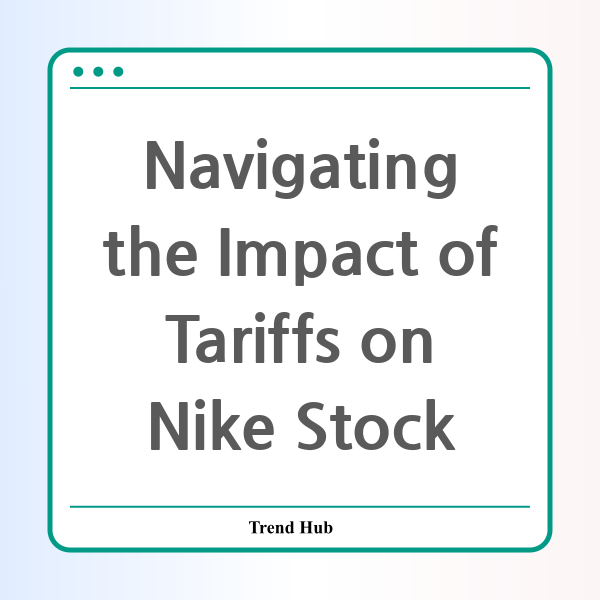* This website participates in the Amazon Affiliate Program and earns from qualifying purchases.

As retailers worldwide navigate a shifting economic landscape, one question looms large: How will rising tariffs impact the stocks of companies like Nike? With major U.S. apparel and footwear brands caught in the crosshairs of tariff increases, this trend raises significant concerns for investors and consumers alike.
In recent announcements, the Trump administration proposed punitive tariffs targeting imports from key manufacturing hubs including Vietnam and India. This decision has sent shockwaves through the retail sector, particularly for companies like Nike, Gap, and Levi's that have strategically reduced their reliance on Chinese manufacturing over the past few years. The expectation was that diversifying supply chains would shield them from the economic fallout. However, the new tariffs threaten to unravel these efforts.
The proposed increases are steep: a staggering 46% on imports from Vietnam, 26% on India, and similar hefty rates on other countries. The implications of these tariffs are profound. For Nike, a brand already striving to rejuvenate consumer interest amidst a highly competitive landscape, the forecast is grim. Recent stock market reactions indicate a significant downturn, with Nike shares dropping as much as 10% amidst fears this tariff war could further complicate their growth strategy.
According to industry analysts, the average U.S. import tariff rate on apparel could soar to levels seen only once before, potentially leading to $26 billion in duties—more than double what was recorded in the previous year. Retailers are already reporting that they may need to hike consumer prices by 10% to 12% to offset these costs. Such price increases could dampen consumer spending, creating a ripple effect throughout the economy.
One of the major challenges for retailers is the time it takes to shift production to alternative locations. While some brands have made strides to diversify their sourcing from China to other countries like Vietnam, this transition takes years and is fraught with complexities. The International Apparel Federation has termed the sudden imposition of tariffs a "major shock," emphasizing that customers will eventually bear the brunt of these increased costs.
What does this mean for Nike’s stock? As consumers face rising prices, the demand for discretionary spending could falter. Nike's current strategy of revitalizing its sneaker lines, such as the iconic Air Jordan and Adidas Samba series, is at risk. Customers may pivot to cheaper alternatives or reduce spending altogether, threatening profit margins and long-term brand loyalty.
Moreover, the retail sector is bracing for a broader impact. Companies that rely heavily on imported merchandise, such as Walmart and Kohl's, are similarly vulnerable. Their business model, which demands low prices to attract in-store customers, may become untenable if tariffs force them to significantly raise prices. For Kohl's, already struggling with declining sales guidance amid soaring costs, this could signal a major crisis.
As we move forward, the central question remains: How will these tariffs shape the future of apparel retail? Retailers like Nike are left to consider their next steps, balancing the need to protect profit margins with the responsibility to keep their products affordable for consumers. As the U.S. economy evolves, savvy investors will keep a close eye on how these developments impact stock valuations and market performance.
In conclusion, the landscape is changing rapidly, and companies must adapt to survive. The impact of tariffs isn’t just a bubble—it could reshape the entire fabric of retail in America.
* This website participates in the Amazon Affiliate Program and earns from qualifying purchases.